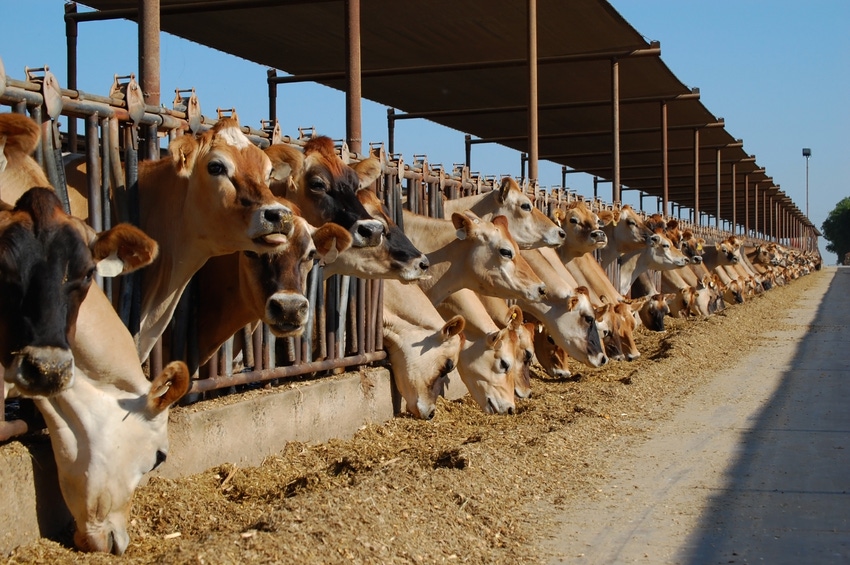Compared to high-fat diets, feeding lactating Jersey cows high-starch diets may increase nitrogen partitioning toward milk secretion.

Jersey cows are known to produce milk with higher component values than Holsteins, leading to specialized nutrient requirements for the smaller-sized Jersey dairy cow.
D.L. Morris, T.M. Brown-Brandl and P.J. Kononoff with the University of Nebraska-Lincoln, K.E. Hales with Texas Tech University and K.J. Harvatine with The Pennsylvania State University recently published a study that determined the effects of isoenergetic high-starch or high-fat diets on energy and nitrogen partitioning as well as energy utilization of Jersey cows.
Morris et al. enrolled 12 multiparous Jersey cows (at about 192 days in milk) in the study in a crossover design with 28-day periods (24 days of adaptation and four days of collection) to compare two treatment diets.
Treatments were high starch (30.8% starch, 31.8% neutral detergent fiber [NDF] and 1.9% fatty acids) or high fat (16.8% starch, 41.7% NDF and 4.1% fatty acids), Morris et al. said. Diets were formulated to have net energy for lactation (NEl) content of 1.55 Mcal/kg of dry matter, according to the National Research Council (2001) dairy model.
Nutrient composition was varied primarily by replacing corn grain in the high-starch diet with a rumen-inert fat source and cottonseed hulls in in the high-fat diet, the researchers noted.
Morris et al. reported that gross energy content was lower for the high-starch diet (4.43 versus 4.54 Mcal/kg of dry matter), whereas digestible energy (2.93 versus 2.74 Mcal/kg of dry matter), metabolizable energy (2.60 versus 2.41 Mcal/kg of dry matter) and NEl (1.83 versus 1.67 Mcal/kg of dry matter) content were all greater than for the high-fat diet.
Tissue energy deposited as body fat tended to be greater for the high-starch diet (4.70 versus 2.14 Mcal per day), the researcher said.
For nitrogen partitioning, Morris et al. noted that the high-starch diet increased milk nitrogen secretion (141 g versus 131 g per day) and decreased urinary nitrogen excretion (123 g versus 150 g per day).
The high-starch diet increased apparent total-tract digestibility of dry matter (66.7% versus 61.7%), organic matter (68.5 versus 63.2%), energy (66.0 versus 60.4%) and 18-carbon fatty acids (67.9 versus 61.2%), compared with the high-fat diet, Morris et al. said.
However, they reported that apparent total-tract digestibility of starch decreased for the high-starch diet from 97.0% to 94.5%.
Further, the researchers said the high-starch diet tended to increase milk yield (19.7 kg versus 18.9 kg per day), milk protein content (4.03% versus 3.93%), milk protein yield (0.791 kg versus 0.740 kg per day) and milk lactose yield (0.897 kg versus 0.864 kg per day) compared with the high-fat diet.
In addition, high starch decreased milkfat content (5.93% versus 6.37%) but did not affect milkfat yield (average of 1.19 kg per day) or energy-corrected milk yield (average of 27.2 kg per day), Morris et al. noted.
The researchers concluded that the high-starch diet had a greater metabolizable energy and NEl content, increased nitrogen partitioning toward milk secretion and away from urinary excretion and may have increased energy partitioning toward tissue energy deposited as fat.
The study was published in the Journal of Dairy Science.
About the Author(s)
You May Also Like


.png?width=300&auto=webp&quality=80&disable=upscale)
